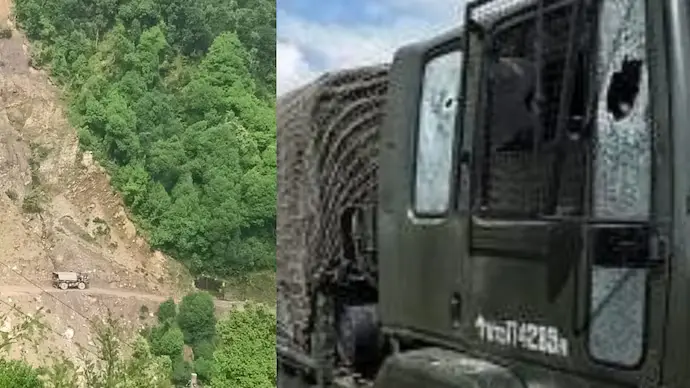

The Agniveer scheme, introduced in June 2022, has been a topic of significant debate and controversy in India. Recent events have reignited discussions about the scheme’s effectiveness and fairness. Here’s a closer look at the Agniveer scheme, its criticisms, and the latest developments.
What is the Agniveer Scheme?
The Agniveer, also known as the Agnipath scheme, is a military recruitment program. It enlists young individuals in the Army, Navy, and Air Force on a four-year contract. After this period, 25% of recruits will be retained for an additional service. The scheme aims to rejuvenate the armed forces with young talent and provide a pathway for youth to serve their country.
Key Features
- Short-term Service: Recruits serve for four years in the armed forces.
- Eligibility: Targets individuals aged 17.5 to 21 years.
- Training and Employment: Recruits receive extensive training and serve in various roles.
- Benefits: Post-service, Agniveers receive a financial package, including a lump sum payment, which helps them in future job opportunities.
- Permanent Enrollment: A select percentage is absorbed into the regular forces based on performance.
Criticisms of the Agniveer Scheme
Despite its intentions, the Agniveer scheme has encountered significant opposition. Critics contend that the four-year tenure fails to offer long-term job security, leaving recruits uncertain about their future. Additionally, the lack of a pension is seen as a significant drawback. Concerns have also been raised about the relevance of military skills in civilian jobs, potentially impacting employability after service. Critics believe the scheme could lower the morale of soldiers due to its temporary nature and affect the overall professionalism of the armed forces.
Recent Protests and Opposition
The scheme has sparked protests since its announcement, particularly in states like Bihar and Uttar Pradesh. Opposition leaders like Rahul Gandhi, Akhilesh Yadav, and Arvind Kejriwal have voiced strong objections, fearing it endangers the future of many youths and diminishes the armed forces’ fighting spirit. The Agniveer scheme became a focal point in the lead-up to the 2024 Lok Sabha elections.
The Case of Agniveer Ajay Kumar
Ajay Kumar, a 23-year-old Agniveer, made the ultimate sacrifice when he was martyred in a landmine explosion in Jammu and Kashmir on January 18. His tragic death has once again highlighted the significance of the scheme. Congress leader Rahul Gandhi accused Defence Minister Rajnath Singh of lying about the compensation provided to Kumar’s family. Singh had claimed that the government offers Rs 1 crore to the families of Agniveers who die in service.
Rahul Gandhi’s Accusation
Rahul Gandhi, in a parliamentary address and a video posted on social media, demanded an apology from the Defence Minister, citing that Kumar’s father claimed they had not received the promised compensation. He accused Rajnath Singh of misleading Parliament and the public about the compensation.
Defence Minister’s Response
Rajnath Singh refuted Gandhi’s allegations, stating that the Agnipath scheme is similar to recruitment models in other countries and had undergone thorough consultation. The Indian Army also clarified that Ajay Kumar’s family had received Rs 98.39 lakh out of the Rs 1.65 crore compensation due, with the remaining amount to be paid after final settlements and police verification.
Clarification on Compensation
The Army emphasized its commitment to honouring fallen soldiers and ensuring timely payment to their families. However, a debate emerged on social media about whether the amount received was insurance or government compensation. Some argued that insurance payouts should not be considered as government compensation, pointing out discrepancies between promises made and actual payments.
Former Navy Chiefs Raise Concerns Over Agniveer Scheme
Former Indian Navy Chief Admiral Karambir Singh has raised serious concerns about India’s new defense policy, the Agniveer scheme. He believes that the Agnipath scheme, part of this policy, will reduce the combat effectiveness of the Indian Army. Singh’s remarks came in response to a tweet by retired Navy Chief Arun Prakash.
Concerns Over Combat Effectiveness
Admiral Singh argues that the Agniveer scheme’s primary goal seems to be reducing the defense pension bill rather than enhancing military capabilities. This aligns with Arun Prakash’s view that any changes in the army should be evaluated based on their impact on combat effectiveness, emphasizing that economic considerations should not overshadow national security.

Operational Constraints Highlighted
Retired Navy Chief Arun Prakash also noted that the Agnipath scheme imposes significant operational constraints on combat units. Retired Major General Kuldeep Sindhu supported this view, comparing it to warnings from US senators about sending inadequately equipped and poorly compensated soldiers into war.
Economic vs. Security Concerns
Security analyst Sushant Sarin from the Observer Research Foundation (ORF) acknowledged the serious issues with the Agnipath scheme but highlighted its economic necessity. He stated that India cannot afford to allocate enormous sums to pensions at the expense of national security.
Conclusion
The Agniveer controversy highlights the ongoing debates surrounding military recruitment reforms in India. While the scheme aims to modernize the armed forces and provide youth opportunities, its implementation has raised significant concerns. The recent debate over compensation for Agniveer Ajay Kumar’s family underscores the need for clear communication and accountability in addressing the concerns of soldiers and their families. Furthermore, the concerns raised by former Navy chiefs about the scheme’s impact on combat effectiveness indicate the importance of balancing economic constraints with maintaining a robust and capable national defence.






[…] The Agniveer controversy: Rahul Gandhi’s claims and the army’s response […]